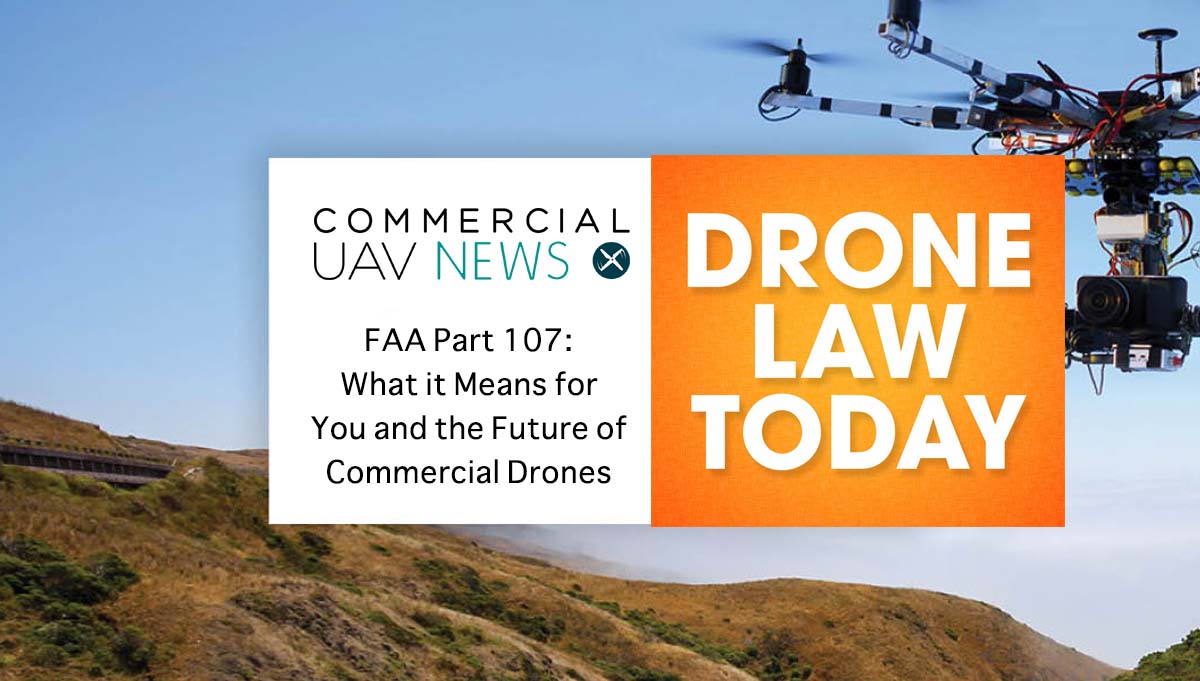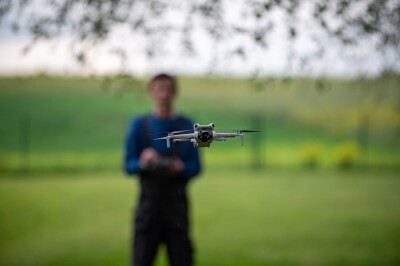Discussing how Part 107 will impact commercial operators is a topic that the Drone Law Today podcast has dealt with, and while it’s fun to talk through the ramifications of this rule, the details that Drone Law Today host Steve Hogan discussed during a recent webinar more fully explain and explore things like being compliant under Part 107, and what it means to be “safe” in the airspace.
FAA Part 107: What it Means for You and the Future of Commercial Drones – Webinar with SGS! features the full webinar that Steve was part of with Tracy Lamb from SGS. I caught up with Steve to follow up around a few of the things that he discussed on the webinar/podcast, which includes the distinctions between a legal and safe flight as well as what we need to do to create a “safety culture”.Find out what he has to say about all of that and more via the interview below before or after you listen to the episode in iTunes or Stitcher or even your browser. Jeremiah Karpowicz: How much confusion do you run into in terms of what people think Part 107 mean for them, versus what it actually does?Steve Hogan: Like anything in the drone world, when something is new it’s hard to get your hands around. The FAA has done a great job in communicating information about the regulations and how they work for commercial operators. I’ve got to commend the agency for sharing as much information as possible on their website – I would direct link the Part 107 things specifically, but things shift around. Safer to go to http://www.faa.gov/uas/ and follow the appropriate links.The distinction between something being legal versus safe is one that it seems not enough people are making. Why do you think that’s the case? That may stem from the “culture clash” that we see with drones generally.On one hand, you have an aviation community that is hyper-focused on safety, with good reason! When you have a person in a flying machine, you’d better be sure you can take off, fly, and land safely or it’s going to be a big problem.On the other hand, you have the “fail fast” mentality of entrepreneurs that are trying to quickly develop their products and services in order to compete in the market. That type of thinking, while completely understandable, doesn’t lend itself to a hyper-focus on safety.We haven’t found the equilibrium yet between the two mindsets. Eventually that will have to emerge. What advice do you have for operators as they consider risk and probability? Think hard! The baseline of risk, from my perspective, is what the court system can do to a company or person that acts recklessly or negligently. When you act like that and cause harm, the monetary damages that can be imposed upon you can sink your business and permanently scar your ability to make it in the world. That’s one reason we call them “damages.”Insurance can help a lot here. Operators should take care to get a policy that really covers what they are doing – that will take care of much of the risk profile of commercial operations. What do you think it will take for the industry to truly cultivate a “safety culture”?Time and commitment. One reason that I put out the Drone Law Today podcast is to serve up good information to “Drone Law Nation” – the people out there that are committed to doing things right. The bad actors will always be around. It’s up to us all to make sure that the bad apples don’t ruin it for everyone else.Subscribe
The information you submit will be stored and used to communicate with you about your interest in Commercial UAV News. To understand more about how we use and store information, please refer to our privacy policy.
October 10, 2016
The Future of Commercial Drone Regulation Under Part 107















Comments